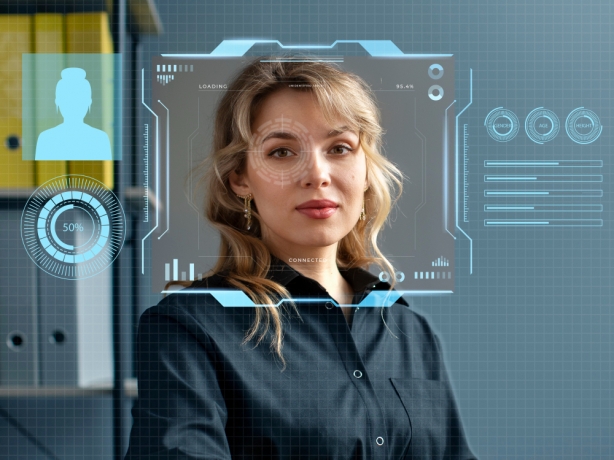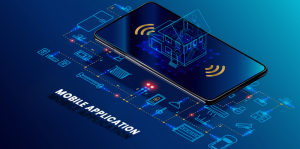Introduction
In our increasingly digital world, verifying identity securely and efficiently has become crucial. Biometric verification stands out as a robust solution, leveraging unique physical characteristics such as fingerprints, facial patterns, and voice to authenticate individuals. This blog delves into the fundamentals of biometric verification, its various types, and its applications across different sectors.
What is Biometric Verification?
Biometric verification uses an individual's unique physical traits to confirm their identity, answering the crucial question: "Who are you?" This process allows individuals to gain access to services, devices, or systems securely and conveniently in a digital environment.
Types of Biometrics
Many people are already familiar with various forms of biometric authentication, thanks to its integration into consumer devices like smartphones and computers. Here are the primary types:
1. Fingerprint Recognition: Widely used due to its integration in smartphones, fingerprint recognition involves scanning and matching an individual’s fingerprint against a stored template. Touchpads or screens can serve as fingerprint scanners, making this technology highly accessible.
2. Voice Recognition: Utilized by digital assistants and telephone-based services, voice recognition identifies and authenticates users based on unique voice markers. With the rise of AI-powered assistants like Amazon's Alexa and Apple's Siri, voice recognition has become more prevalent.
3. Facial Recognition: Any device with a camera can employ facial recognition technology. This method involves scanning facial features and comparing them to stored data. Facial recognition is now commonly used to unlock smartphones and verify identities during high-risk moments, such as online banking transactions.
How Biometric Verification Works
Biometric technology has seen rapid adoption for verifying identities online and detecting fraudulent activities. According to a 2021 Biometric Survey, over 60% of large companies in the US have adopted biometric authentication, with more than 80% of consumers open to using biometrics for secure transactions. Here’s how biometric verification typically works:
1. Fingerprint Scanning: Fingerprints are scanned and matched against stored templates. For instance, India's Aadhaar system uses fingerprint verification to provide a unique identification number, enabling secure payment solutions like Micro ATMs.
2. Facial Verification: This technology uses AI to scan facial features and match them against a stored image. It ensures the presence of a real user, protecting against fraudsters using masks or digital attacks.
3. Voice Recognition: Unique markers in a person’s voice are analyzed and matched against stored voice prints, ensuring accurate verification.
Common Uses of Biometric Verification
Biometric verification has become integral to various sectors, offering secure and efficient authentication methods:
1. Mobile Access and Authentication: Modern devices use biometric data such as fingerprints and facial features to unlock phones and secure apps, providing a seamless user experience.
2. Airport Security: Biometrics streamline traveler verification at airport security checkpoints, offering a contactless and automated process.
3. Online Banking: Banks use biometric verification to secure mobile banking apps, ensuring that only authorized users can access sensitive financial information.
4. Remote Identity Verification: Businesses use document and biometric-based solutions for KYC compliance and fraud prevention. Users provide a photo ID and a selfie, which AI algorithms match to confirm the document’s authenticity.
What is a Biometric Identity Verification System?
A biometric identity verification system uses biometric data to confirm a person’s identity. This system is widely used by businesses to meet KYC regulations and prevent fraud. For example, ePassport gates at airports compare the passport photo to the traveler’s facial biometrics for verification.
Onfido’s technology works similarly but offers the flexibility of remote verification. Users take a photo of their identity document and a selfie or video using their smartphone. Onfido’s AI then compares the images to ensure they match, providing a secure and convenient verification process.
Why Use Biometrics?
Biometrics offer a higher assurance of identity compared to traditional methods like usernames and passwords. They are secure, convenient, and difficult to replicate or steal. Here’s why biometrics are advantageous:
- Security: Biometric data is unique to each individual, making it challenging to forge or steal.
- Convenience: Users don’t need to remember passwords or carry physical tokens; their biometric data is always with them.
- Accuracy: AI algorithms or trained experts perform the comparison, reducing human error.
Biometric Verification at Onfido
At Onfido, we anchor a user’s physical identity to their digital account using a photo ID and a selfie or video. Our AI, Atlas™, checks the identity document for fraud and compares the selfie or video to the document’s photo. This process ensures that the person submitting the ID is its rightful owner.
- Selfie Check: Users take a selfie, which our AI compares to the ID photo, checking for similarity and detecting potential fraud.
- Motion Check (Video): Users record a short video performing specific movements, ensuring liveness and protecting against sophisticated fraud attacks like spoof selfies and deepfake videos.
Conclusion
Biometric verification is transforming the way we authenticate identities, offering a secure, efficient, and user-friendly solution. Its applications are vast, from mobile device access to online banking and remote identity verification. As technology advances, biometrics will continue to play a pivotal role in enhancing security and convenience in our digital lives.






